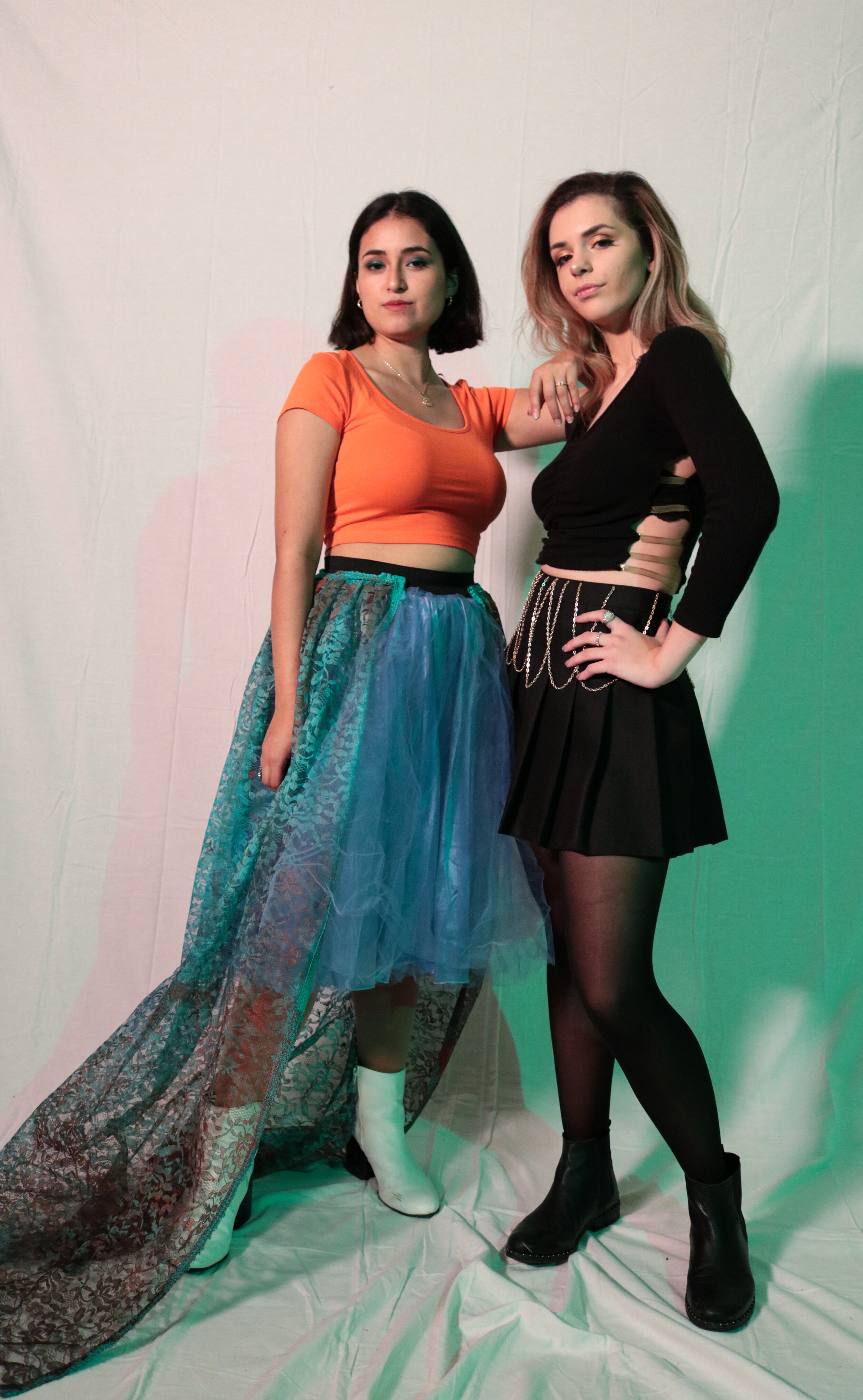The Enviromental Impact of Fashion
By Aleah Tishler


The goal of our project was to create four outfits by repurposing and recycling old clothing that would’ve just been thrown away. Each outfit represents a different negative impact that the fashion industry imposes on the environment.
Outfit #1
"My design was inspired by the fact that 20% of industrial water pollution comes from the treating and dyeing of textiles, which makes textile dyeing the second largest polluter of clean water after agriculture. During this process, I learned that azo dyes, which produce bright reds, yellows, and oranges, are some of the most toxic dyes and can even have carcinogenic effects. Thus, I was inspired to create an outfit that showed the effect these dyes have on the environment. The skirt represents the water and the orange paint trickling downwards from the shirt is “contaminating” it. The skirt gets dirtier as it reaches the floor demonstrating the negative impact of the dyes." - Carla Posada
20% of industrial water pollution comes from treating and dyeing textiles. Textile dyeing is the second largest polluter of clean water globally, after agriculture.
Designed/Modeled by Carla Posada
Outfit #2
"In 2012, Dr. Doug Guthrie, dean of International Business and Management at the George Washington University’s School of Business, along with a team of researchers found that mining one ounce of gold will produce twenty tons of waste including arsenic, cyanide, along with other chemicals that contaminate the air, soil, and bodies of water found around the mines. After learning this, I was inspired to create a piece of clothing that would bring attention to this issue. Both pieces of the outfit are black in order to draw attention to the gold accents on the pieces. On the skirt, I draped ten chains of gold, five on the front and five on the back. On each side of the shirt can be found five gold ribbons. Using the information learned from the backstory to this piece, I hope people are motivated to take better care of the gold pieces of jewelry that they already own in order to preserve them to wear for longer periods of time and to be conscious of the environmental effects when purchasing new gold jewelry." - Christina Strippoli
20 tons of waste are produced for every one ounce of gold. Mining for gold, silver, diamonds, gemstones, and other metals causes greenhouse gas emissions, water pollution, and soil erosion.
Designed/Modeled by Christina Strippoli
Outfit #3
"60% of clothing is made of synthetic fibers like polyester, rayon, nylon, etc. These are all produced from petrochemicals, which do not decompose and pollute the environment. Fast fashion is responsible for 8% of global carbon emissions, emitting 1.2 billion tons of carbon dioxide. Inspired by these statistics, I made 60% of my outfit from a black polyester cardigan to represent synthetic fibers and their connection to oil. The other 40% is made from cotton jeans. The white detailing on the top is in the shape of smokestacks emitting CO2 to represent the large carbon footprint of the fashion industry. I hope my outfit and the whole project will encourage people to find ways to recycle their own clothes and shop more sustainable brands." - Aleah Tishler
60% of clothing is made of synthetic fibers produced from petrochemicals, which do not decompose. Fast fashion emits 1.2 billion tons of CO2 per year, more than air travel and shipping combined.
Designed/Modeled by Aleah Tishler
Outfit #4:
"As it turns out ⅓ of all micro plastics found in the ocean comes from textiles. This predominantly happens when you go to wash your clothing and the synthetic materials strip down and go down the drain with the rest of the dirty water from your washing machine. I decided to depict this fact by showing the ⅓ of the ocean that I currently infected with plastic. Thankfully there is a way to prevent these fibers from getting in the water, you just have to purchase a special wash bag that catches the fibers during your cycle. I hope this inspires people to be more aware of the effects that they have on our oceans and to take action. " - Severine McElrath
⅓ of all the micro plastics in the ocean come from textiles. Microplastics are ingested by marine life, accumulate in the food web, and are toxic to wildlife and humans. They can damage lungs, increasing risk of asthma and cancer.
Designed/Modeled by Severine McElrath














